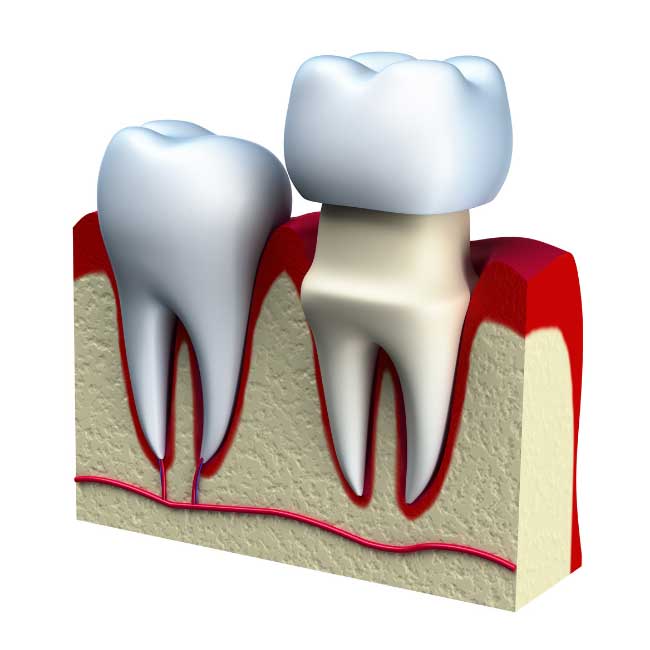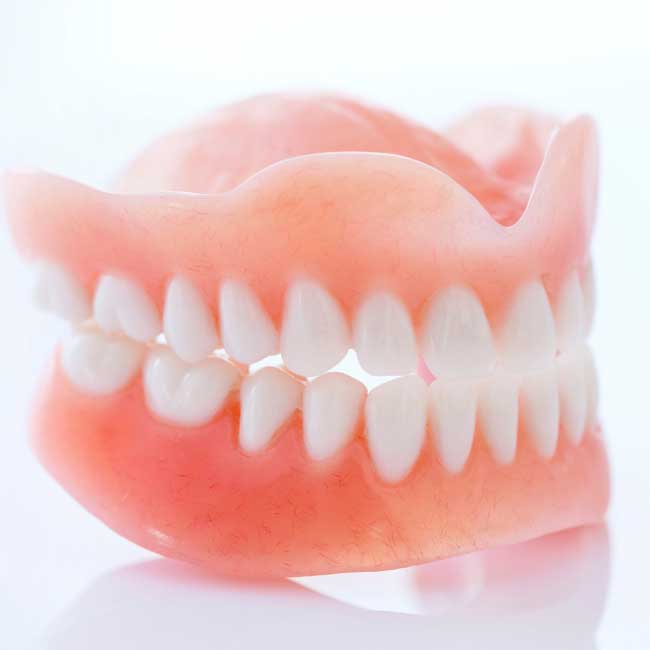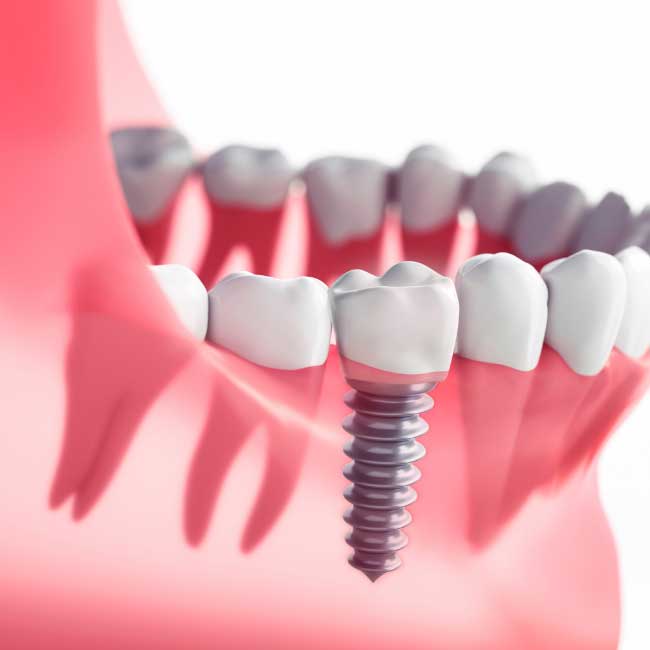
Dental bridges are used to for the same purpose as a partial denture and implants; to replace missing teeth. There and several types of bridges that can be made. In our office, we typically recommend placing conventional fixed bridges and some cantilever bridges; both cannot be removed. These bridges do require the teeth on each side of the missing tooth to be reshaped to allow the abutment (or crown) to be placed and cemented to hold the bridge in place.

Dental crowns are necessary when a patient’s badly damaged teeth can be functional once again. A crown may be used to protect a cracked tooth, restore functionality of a tooth with excessive decay or replace a pre-existing crown. Dental crowns may hold parts of a cracked tooth together causing less potential pain and discomfort the patient may be experiencing. It also can be used to hold a bridge in place as noted above. We also use crowns to improve appearance as well.
This dental solution can be considered a hybrid because you get the structure of the metal alloy crown along with the natural look of the layered porcelain crown. We often used pfm crowns for your posterior (back) teeth because with the metal structure of the crown you have greater strength for chewing.
Ceramic crowns are completely made of glass like material like pressed porcelain and provide a great advantage to our patients where teeth appear more natural and lifelike. Unlike a pfm crown and bridge, abutments remain all ceramic.

Resin-base composite restorations are made up of a glass and plastic mixture that is tooth colored. resin base composites are aesthetically more pleasing and typically our dentists use these materials for your anterior (front) teeth as they are more visible when smiling or talking. Dr. Olgetree and our dentists are also able to blend the shades to match the remaining tooth structure and surrounding teeth to their natural color, called tooth-colored fillings.
After our dentist removes all the decay or remaining old restoration material he will start to place the resin base composite by using a prime and bond agent, which helps secure the material in place. They then layer the composite and use what is called a curing light to harden the material (layer by layer the composite is shaded to obtain a more accurate tooth colored match). Once our dentist has finished placing the composite he will then smooth and reshape it to fit the shape of the tooth. Finally he will polish the finished restoration to prevent staining and early wear.

A denture is a removable replacement for missing teeth and the surrounding tissue. There are two types of dentures; complete dentures and partial dentures.
Complete dentures are used when the patient is missing all their teeth. You have two options for a complete denture; conventional or immediate.
When making a conventional denture the patient will have their teeth removed then go through 4 to 6 weeks of healing before our dentists begin taking impressions of the healed gum tissue to send to the lab in order to have yours denture constructed. The total time from removing the teeth until you receive your dentures can be between 8 to 12 weeks (this time varies due to each individual patient healing differently). Yes, this does seem like a long time to go without teeth, however, the overall fit is much better for the most comfort.
Immediate dentures are just like they sound. The denture is ready to be placed once your teeth have been removed. You would come in to have impressions a few weeks before your extraction appointment, so you do not have to go without teeth during your healing process. However, we must state, the disadvantage to the immediate denture is over the next several weeks and months your bone and gum tissue is reshaping and shrinking, which could result in an ill-fitting denture, quickly causing the need for many adjustments to help make the denture fit properly. An immediate denture should only be considered as a temporary solution. It is highly recommended that you have a new denture made 6 months to a year after having your teeth removed.
Partial dentures are removable and attach to the surrounding remaining teeth by plastic tissue shaded and/or metal frame work with claps; it is what holds the denture in place. A partial denture not only replaces your missing teeth; it also helps prevent your remaining teeth from shifting.

Dental implants are the ideal way to replace lost teeth. Implants can help you recapture a beautiful and healthy smile. Unlike bridges or removable dentures, which sit on top of the gums, dental implants are placed under the gums. The “tooth” placed on an implant appears natural, because it comes through the gums just like the original did.
Implants can be used to replace any number of lost teeth. Even people with no teeth can benefit from implants, because they can replace their dentures with teeth that don’t move around when they talk, and they don’t need to be taken out at night. Because we handle the entire process, there is no need to be referred to another office.

We built a membership plan just for you.
Sign-Up Now

Here at Belmont Dental, one of our main aims is to keep up to date with all the latest technologies in the dental sector. We have invested in some of the state-of-the-art equipment to provide you the best dental care that you deserve.

Whiten, brighten and straighten to improve the appearance of your smile.
Learn More
We do our best to make it easy for you to get the beautiful smile you deserve!
Clear aligner technology is one of the quickest, most comfortable and most aesthetically pleasing orthodontic options when it comes to straightening your teeth
Learn MoreImplants are the best solution for tooth loss and they also feel and look like natural teeth. In addition, they are stable and permanent.
Learn More